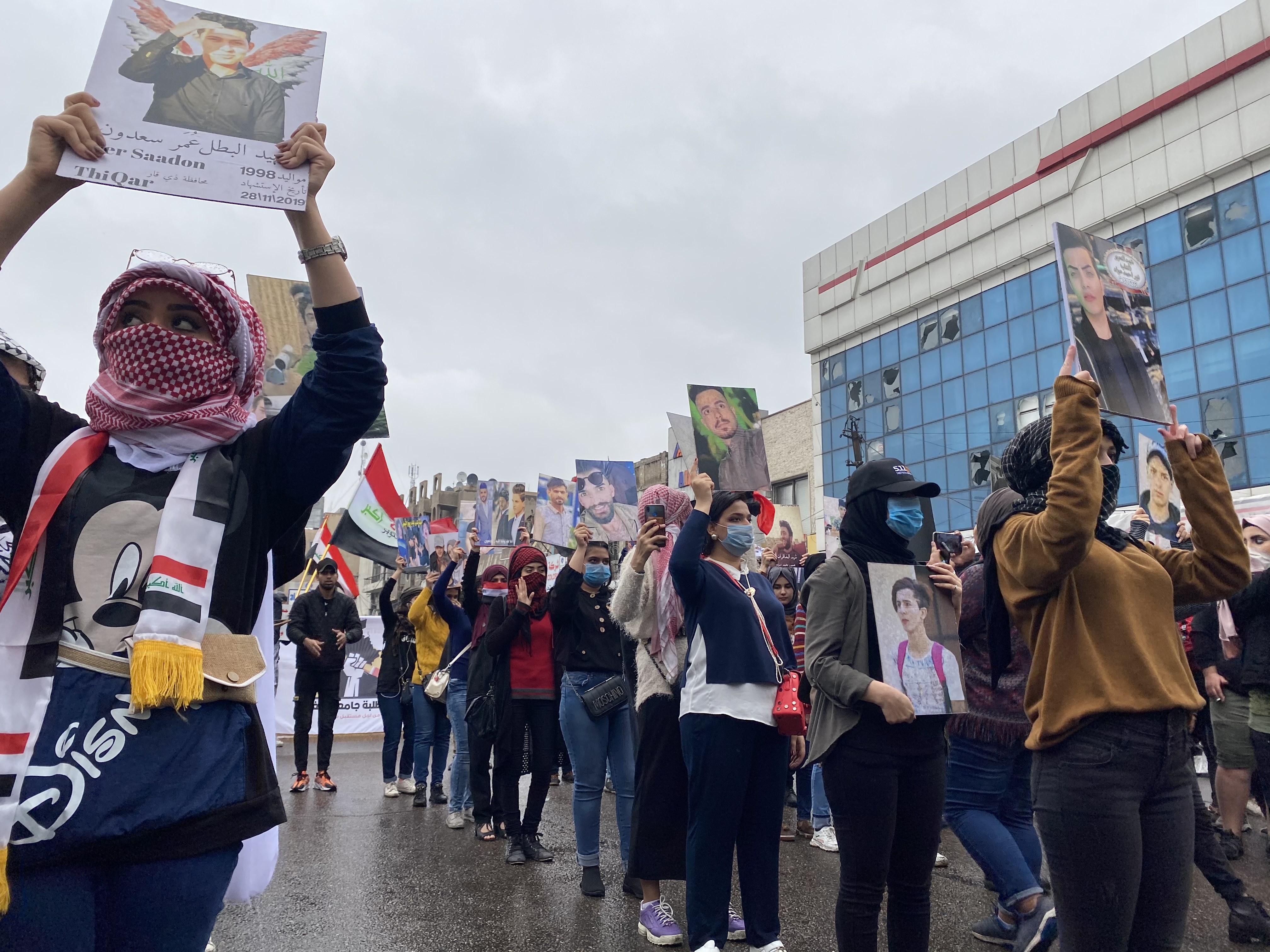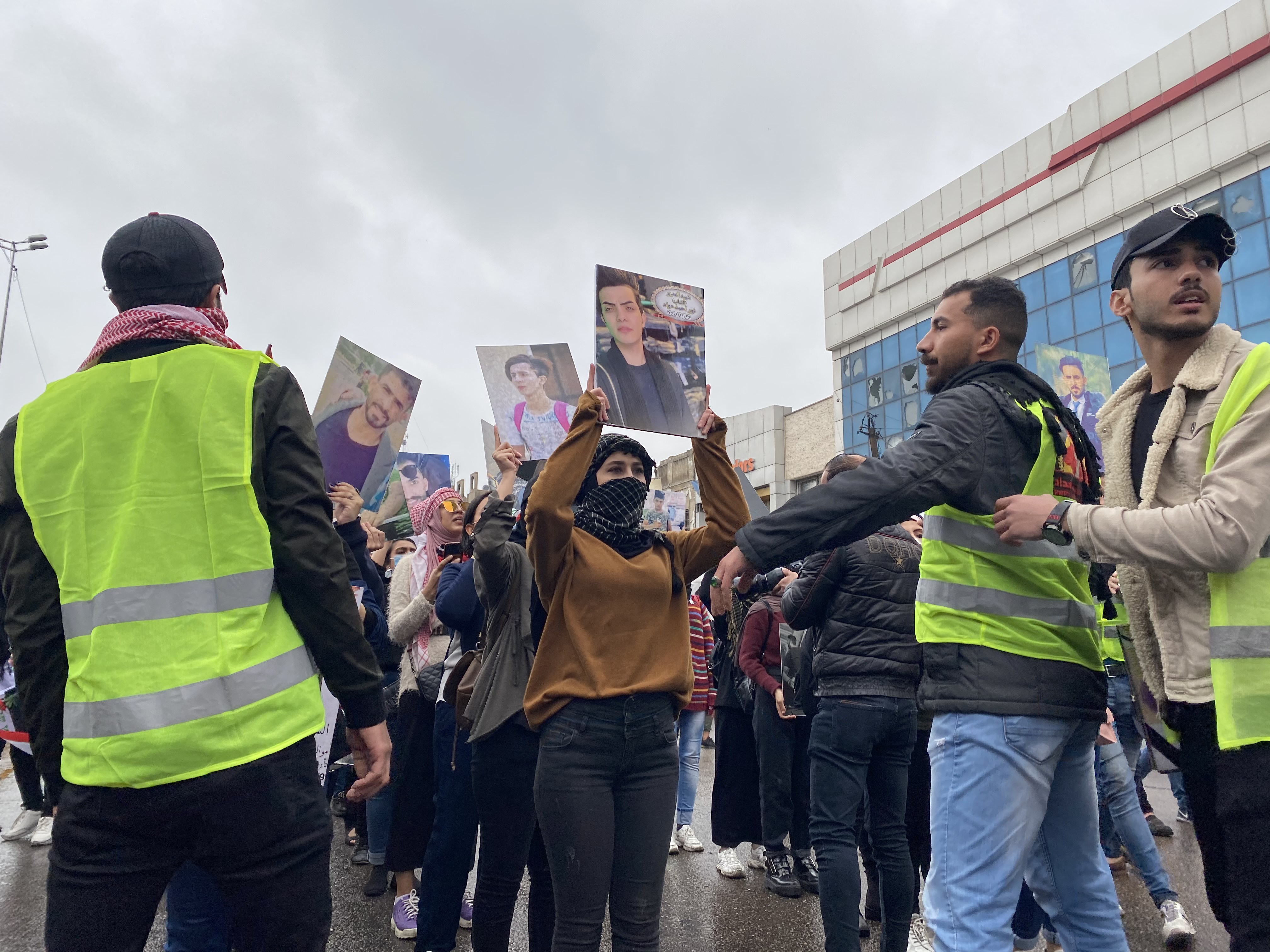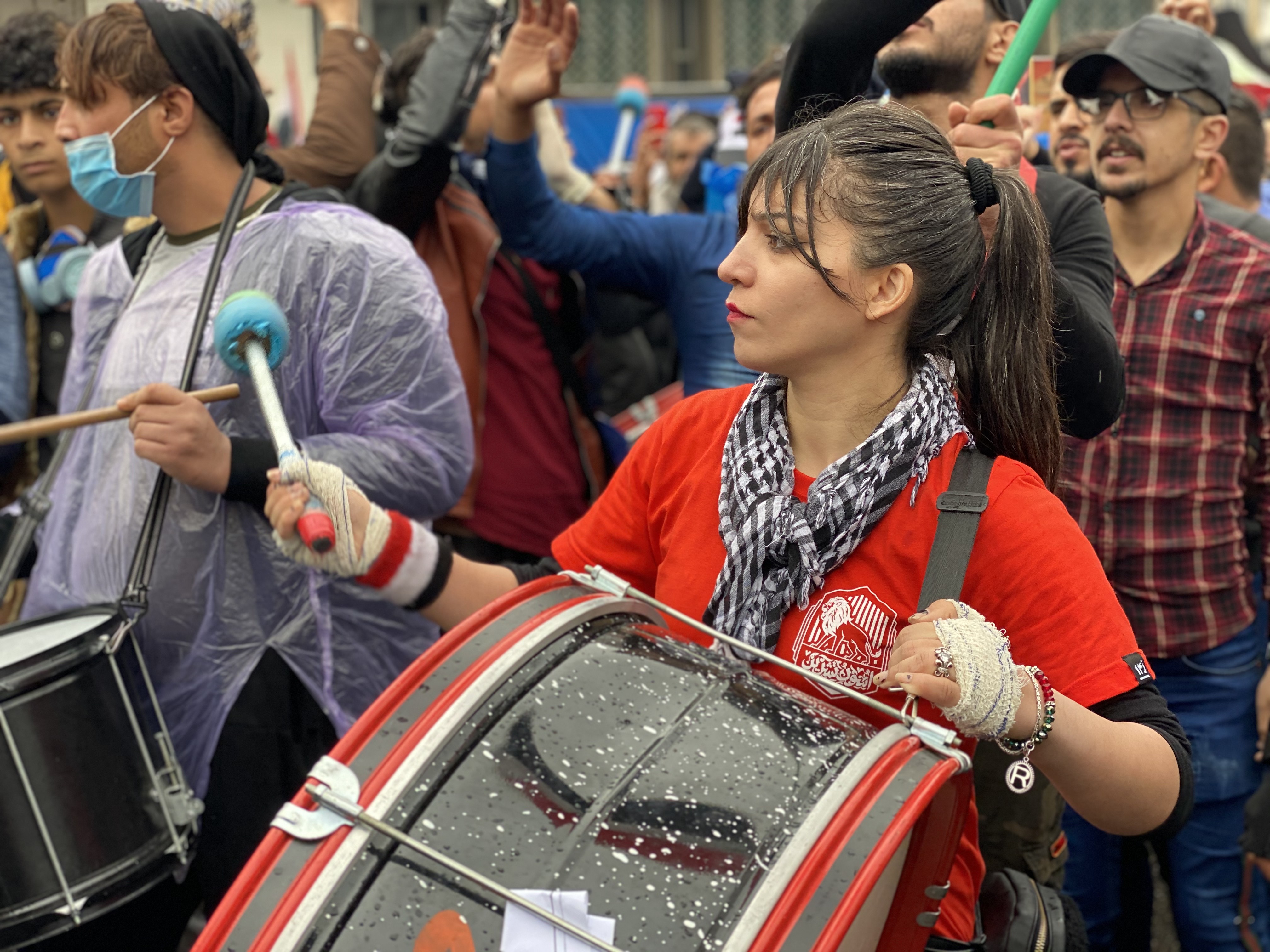“Raising our voices at the Tahrir Square has more influence on the authorities, the participation of the women in protests further strengthens that influence,” based on this belief, Helen Samir, 23, left her hometown, Baqubah, and moved to Tahrir Square, the stronghold of the protestors in Baghdad.
Her participation dates back to the start Iraqi protests began in October 2019 against rampant corruption, lack of services and job opportunities, later the protestors demanded the change of the political system.
“The era of women's fear and silence is over, now it is time for us to ask for our rights and announce our demands like men.”
The era of women's fear and silence is over
She further added that “when we all have one goal, it is necessary for us to be together in order to have more influence.”
Helen and hundreds of women have joined the protests in the Tahrir Square that continued for five months.
The participation of women in the protests in Baghdad who are from other cities and provinces have given a more inclusive picture to the social uprisings.
Shilan Adil, an activist from Khanaqin district, Diyala province, spoke to KirkukNow and said when the protests lasted only two days in her hometown, she started traveling to Baghdad to participate in the protests based on her available time.
“This government has violated the rights of citizens in all the areas in Iraq, so fixing it requires the voice of everyone,” she said.
This government has violated the rights of citizens in all the areas in Iraq
KirkukNow obtained unconfirmed statistics that daily 300 women were present at the Tahrir Square, some of the women traveled to the Baghdad from the provinces where protests did not happen, such as Kirkuk, Diyala, and Salahuddin.
Shilan’s role was providing logistic and medical aid to the protestors as well as taking care of the tents housing the protestors.
“I received threats through text messages. I was asked to stop participating.”

Baghdad, women protestors are holding pictures of protestors who lost their lives, March 2020. Photo Amir Khanaqini
The threats made Shilan fearful, but she did not leave the Square. “I did not join the protests for a while and protected myself, but later I again joined.”
The last five months’ protests are considered the most influential Iraqi protests in the last two decades, forcing the outgoing prime minister, Adil Abdul Mahdi to resign, in December 2019.
At the same time, they also opposed the designation of Mohammed Tawfik Allawi for the premiership, even though he had promised to hold people involved in violence against demonstrators accountable. Allawi could not secure parliament’s confidence and withdrew from the race.
A significant number of protestors also refuse prime minster designate Adnan Alzurfi, who is supported by numerous Shia parties and designated by the Iraqi President, Barham Salih.
The achievements of the protestors, however, have been costly; since the emergence of the protests, 650 civilians have been killed, and over 25 thousand have been injured, according to Fatn Halfi, a member of the Iraqi High Commission for Human Rights (IHCHR).
She stated IHCHR has not been able to determine the degree to which the violence had been committed against women. She said 12 percent of the protestors are women.
Women from different ethnic and religious backgrounds have taken part in the protests. It has become a symbol of the peaceful demonstrations and has blocked authorities from cracking down on the protests.
The women have influenced the men to sustain the protests further
“The women have influenced the men to sustain the protests further,” Ruya said.
Saja Bayati, a Turkmen woman who lives in Baghdad, said that their efforts are to continue the protests and to stop foreign intervention in the formation of the new government.

Baghdad, women protestors are holding pictures of protestors who lost their lives, March 2020. Photo Amir Khanaqini
She said, “Tahrir is no longer a mere square to protest, but rather it is a small homeland for all Iraqis. From here, decisions have to be made.”
Tahrir is no longer a mere square to protests, but rather it is a small homeland for all Iraqis
The protestors’ tents still stand in the Square but they have temprorarily halted the demonstrations due to the enforcement of a curfew aimed at preventing the spread of the coronavirus. The spread of the virus has also been a barrier to the meetings of the council of ministry.
Najwa Jaafar, a graduate of fine art college, uses her art skills with her friends to paint Tahrir revolutionary road with pictures and slogans to motivate women participation in the protests.
She said, “part of my artistic work sarcastically depicts the current situation in Iraq.
She perceives the significant role of women in the protests and states that through the demonstrations they can also mention the demands of women. She wants the prevention of child marriage, the preservation of women’s rights, and the participation of women in the decision-making process.





